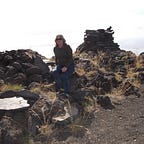La Gomera — A Small Island Which Defied An Empire
My New Home Has An Impressive History
I moved to La Gomera last July, and one of the first things I did in a new place was check out local history. There is always plenty to learn.
The popular myth is that Spain conquered the Canary Islands without much effort. The indigenous people resisted, some for a long time. When French explorer Jean de Bethancourt arrived at La Gomera in 1404, he probably thought taking over such a small island would be easy.
But the Gomeros fought back — for ninety years.
The island and its early inhabitants
La Gomera is just south of Tenerife and is almost round, with a diameter of about 22 kilometers (14 miles). Its area is 370.03 square kilometers (142.87 square miles). The last volcanic eruption in La Gomera was around 2 million years ago. Its steepness is caused by erosion.
The early inhabitants remained largely isolated, presumably by choice, as they must have sailed there. The evidence so far supports them being North African Amazigh-Berbers who left Africa from Morocco, Mauritania, or the Mediterranean. There is a theory that the name “Gomera” comes from “Ghomara,” a tribe from the Rif region of Morocco.
